India, a land of diverse cultures, breathtaking landscapes, and historical marvels, offers a tapestry of experiences for every traveler. If you’re planning a trip to this vibrant country, here are the top 10 places you must visit, each with its own unique charm and attractions.
1. Mumbai – The City of Dreams
Known as the “City of Dreams,” Mumbai is a bustling metropolis that never sleeps. Don’t miss:
Gateway of India: An iconic arch overlooking the Arabian Sea.
The Gateway of India, an architectural marvel in Mumbai, represents the city’s history and majesty. Built in 1924, it combines Indo-Saracenic traditions and recalls key historical events. Its complex architecture, which overlooks the Arabian Sea, making it a timeless symbol and must-see sight in Mumbai.
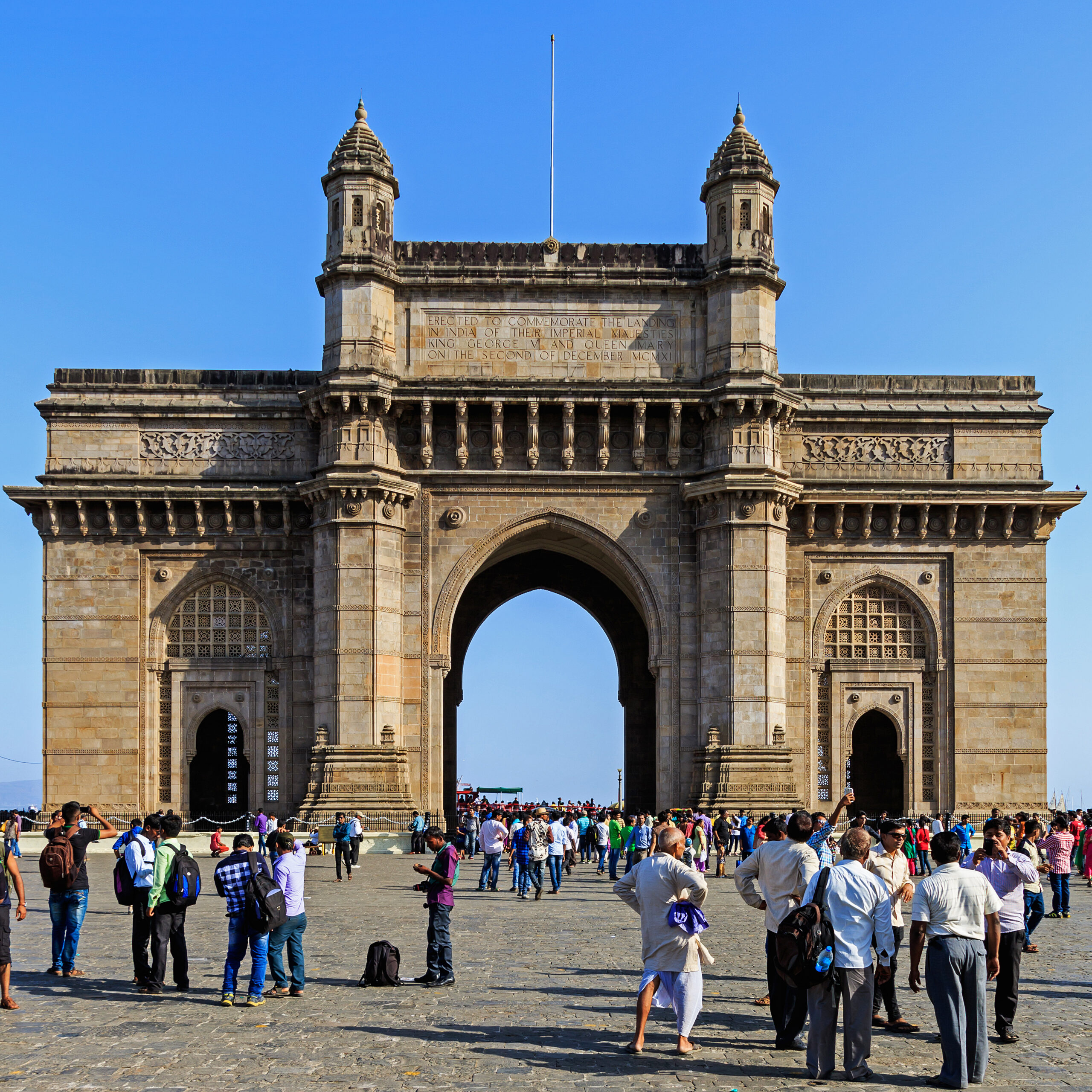
Marine Drive: A picturesque promenade offering stunning sunset views.
Marine Drive, commonly known as the Queen’s Necklace, is a popular avenue in Mumbai. This gorgeous length curves around the Arabian Sea, providing spectacular views and serving as a symbol of the city’s attractiveness. It’s a favorite area for leisurely strolls, colorful sunsets, and a lively nightlife. Marine Drive conveys the spirit of Mumbai’s vibrancy and charm.
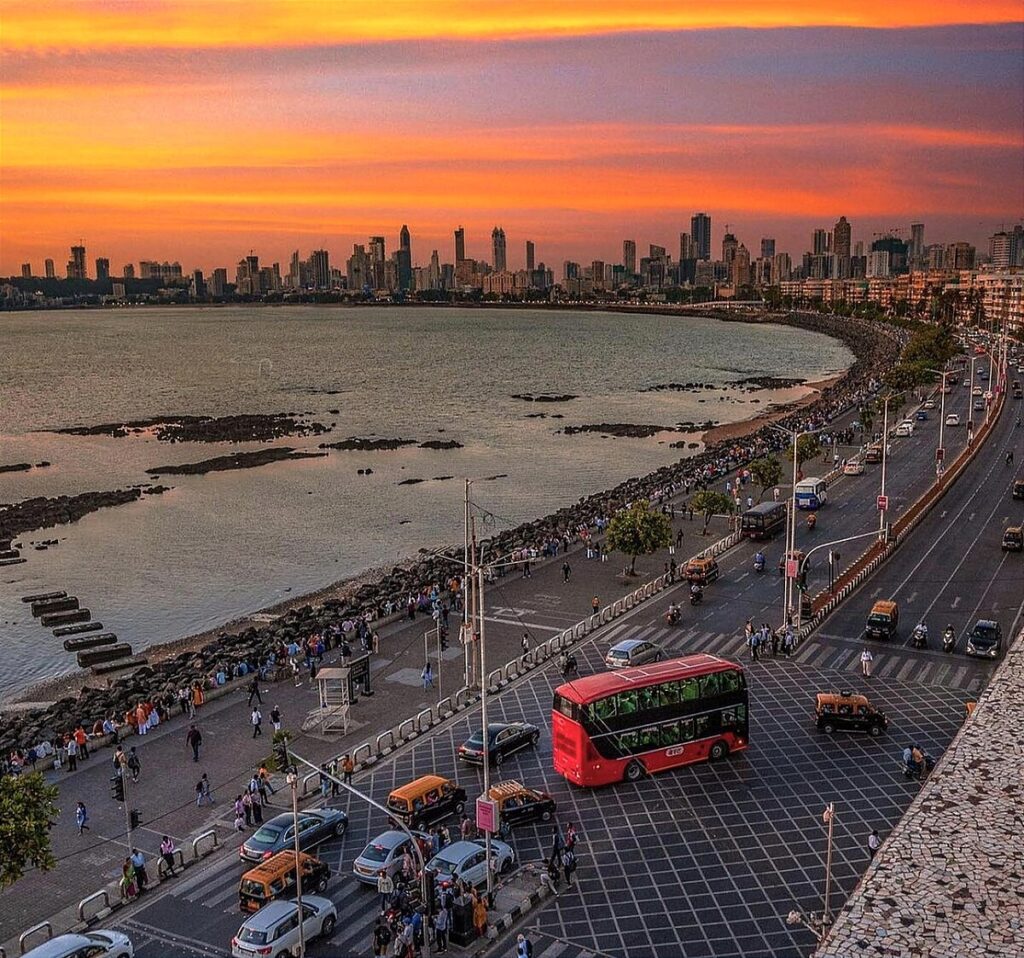
Elephanta Caves: Ancient rock-cut caves on Elephanta Island.
Elephanta Caves, a UNESCO World Heritage Site, are located on Elephanta Island near Mumbai. These rock-cut caves contain remarkable sculptures and shrines devoted to Lord Shiva, with strong Hindu and Buddhist influences. The caves, which are accessible via a short ferry ride, provide a fascinating glimpse into India’s old artistic and religious past.

2. New Delhi – The Capital Heritage
India’s capital, New Delhi, is a blend of history and modernity. Explore:
India Gate: A war memorial honoring Indian soldiers.
India Gate, New Delhi’s prominent war memorial, represents courage and sacrifice. It was built to honor Indian warriors and is surrounded by lovely grounds. The perpetual flame and Amar Jawan Jyoti give honor to the unknown soldiers, resulting in a mournful but powerful mood. A visit to India Gate offers not only a view into history, but also an opportunity for introspection and devotion.
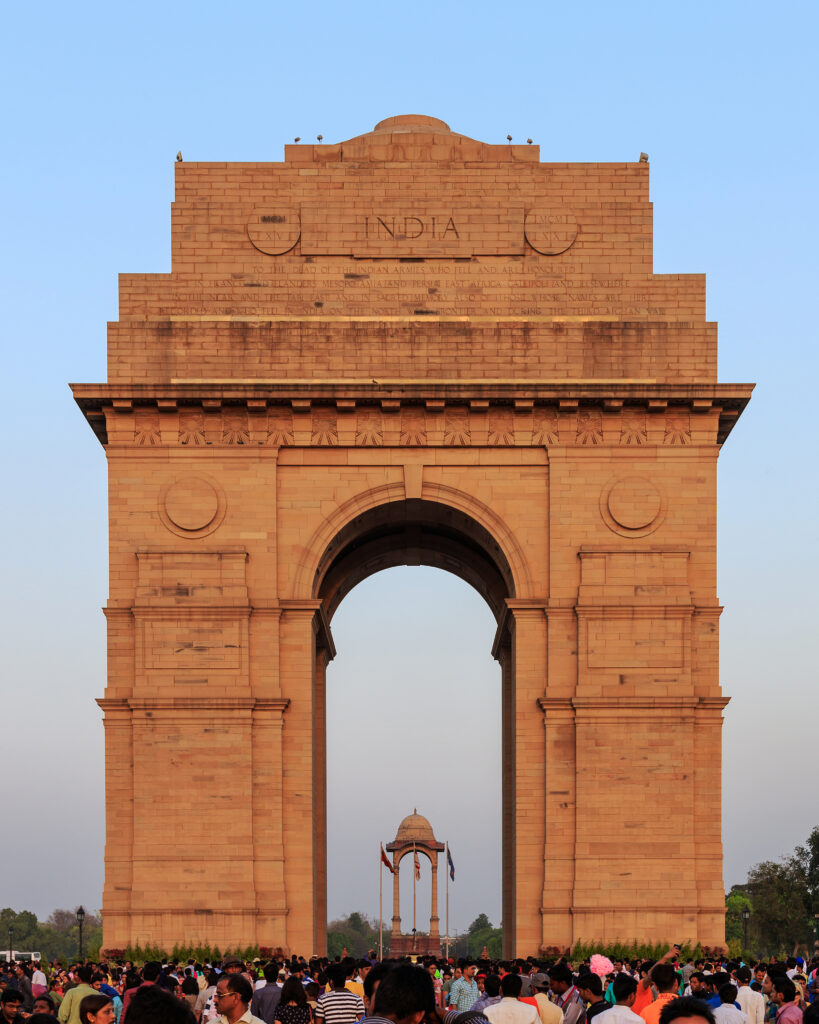
Qutub Minar: A UNESCO World Heritage Site with a towering minaret.
The Qutub Minar, a UNESCO World past Site in Delhi, is a towering reminder of India’s rich architectural past. Standing 73 meters tall, this old minaret features complex carvings and inscriptions that represent the blending of Indo-Islamic cultures. It dates back to the 12th century and is not just a historical landmark, but also a symbol of Delhi’s ethnic variety. Visitors can take the spiral staircase to the top for panoramic views of the city. Qutub Minar is a stunning tribute to India’s rich past.

Humayun’s Tomb: A Mughal architectural masterpiece.
Humayun’s Tomb, located in the middle of Delhi, is an outstanding example of Mughal architecture. It was built in the 16th century and serves as the Mughal Emperor Humayun’s ultimate burial place. The tomb’s elaborate design, rich gardens, and symmetrical arrangement earn it UNESCO World Heritage status. Visiting Humayun’s Tomb provides an insight into the grandeur and beauty of the Mughal era, making it a must-see historical site in India’s capital.
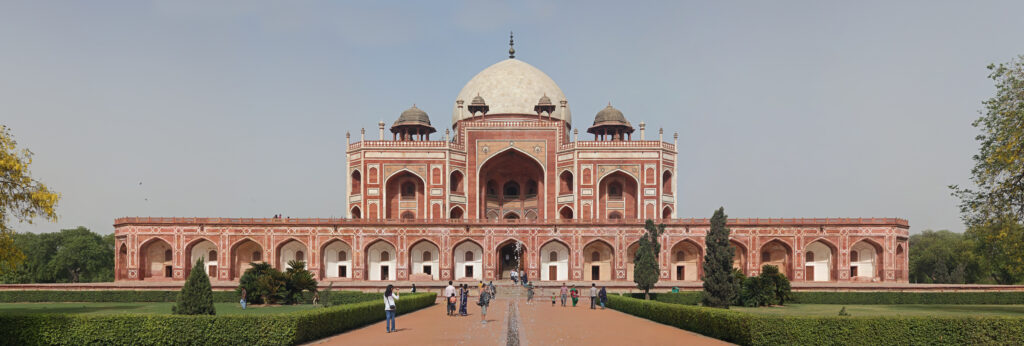
3. Goa – Beach Paradise
For sun, sand, and vibrant nightlife, Goa is the ultimate destination.
Baga Beach: Famous for water sports and lively beach parties.
Baga Beach in Goa is a popular coastal destination known for its vibrant atmosphere and immaculate sands. Baga Beach, known for its water sports, beach parties, and active nightlife, attracts vacationers looking for both rest and excitement. The lively shoreline, accompanied by shacks serving wonderful seafood, produces an ideal balance of relaxation and action. Baga Beach is a must-see destination for Goans, whether they’re lounging in the sun, riding the waves, or enjoying the vibrant beach culture.

Fort Aguada: A well-preserved Portuguese fort with panoramic views.
Fort Aguada, located on the coast of Goa, is a magnificent Portuguese fort with a rich history. It was built in the 17th century and served as an important defensive post. The fort’s well-preserved ramparts provide panoramic views of the Arabian Sea. Today, Fort Aguada serves as a reminder of Goa’s colonial past, inviting visitors to explore its historic walls and immerse themselves in a bygone age.
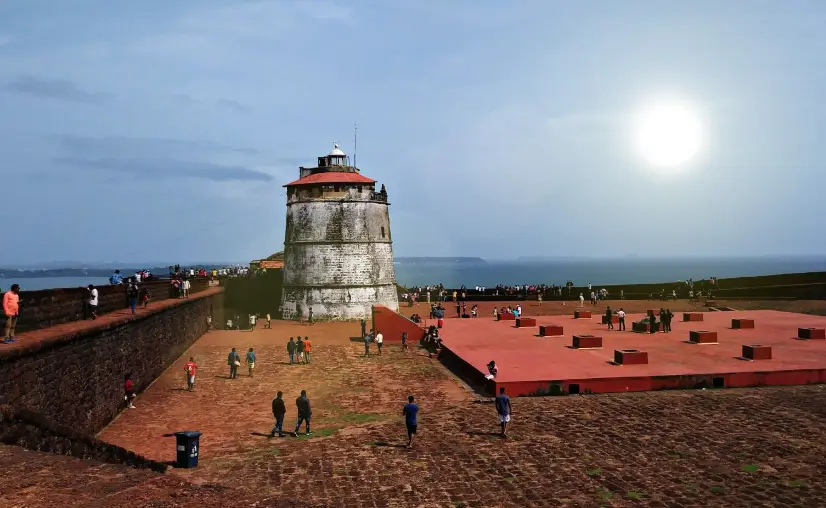
Anjuna Flea Market: A shopper’s paradise with eclectic goods.
Anjuna Flea Market in Goa is a colorful mix of colors, music, and unique merchandise. Nestled near the Arabian Sea, this historic market offers bohemian culture and one-of-a-kind discoveries. It was opened in the 1970s and has since become a melting pot of international and local flavors. From handcrafted jewelry to exotic spices, the market’s vibrant atmosphere and numerous offerings make it a must-see for visitors looking to experience Goa’s distinct charm.

4. Agra – Home of the Taj Mahal
Agra is synonymous with the iconic Taj Mahal, but there’s more to explore:
Agra Fort: A UNESCO World Heritage Site showcasing Mughal architecture.
Agra Fort, a UNESCO World Heritage Site, is a historical treasure on the banks of the Yamuna River. Built by Emperor Akbar in the 16th century, it functioned as a magnificent home for succeeding Mughal kings. The fort’s red sandstone walls contain magnificent palaces, elegant courtyards, and sophisticated architecture, including the Diwan-i-Am and Diwan-i-Khas. Agra Fort, with its strategic view of the famed Taj Mahal, exemplifies India’s rich cultural and imperial heritage.

Fatehpur Sikri: A deserted Mughal city with historical significance.
Fatehpur Sikri, located near Agra, is a UNESCO World Heritage Site that showcases the architectural splendor of the Mughal period. This abandoned city, built by Emperor Akbar in the 16th century, exhibits a diverse range of cultures. The elaborate palaces, courtyards, and Buland Darwaza serve as testaments to Akbar’s vision. Although Fatehpur Sikri was briefly the capital, its red sandstone structures continue to attract visitors, providing a look into a bygone era trapped in time.
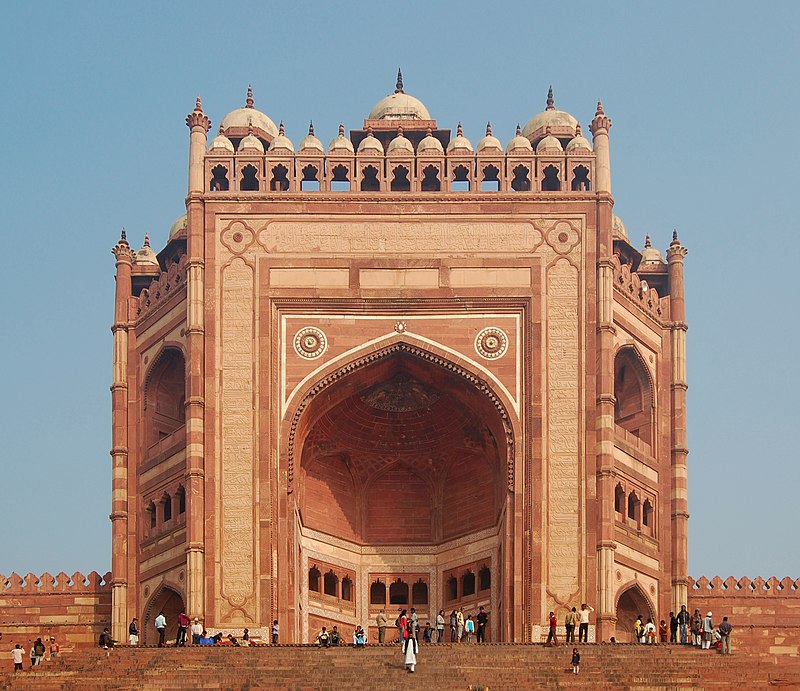
5. Jaipur – The Pink City
Known for its vibrant culture and majestic forts, Jaipur is a visual delight.
Hawa Mahal: A palace with intricately designed windows.
Hawa Mahal, also known as the Palace of Winds, is a unique architectural marvel located in the center of Jaipur, Rajasthan. Built in 1799 by Maharaja Sawai Pratap Singh, its unusual design features several small windows that allow pleasant breezes to flow through. The beautifully constructed façade, with its pink hues signifying Jaipur’s heritage, serves as a reminder of the city’s regal past. Today, the Hawa Mahal is a symbol of Jaipur’s architectural genius and regal history, attracting visitors who marvel at its ageless beauty.
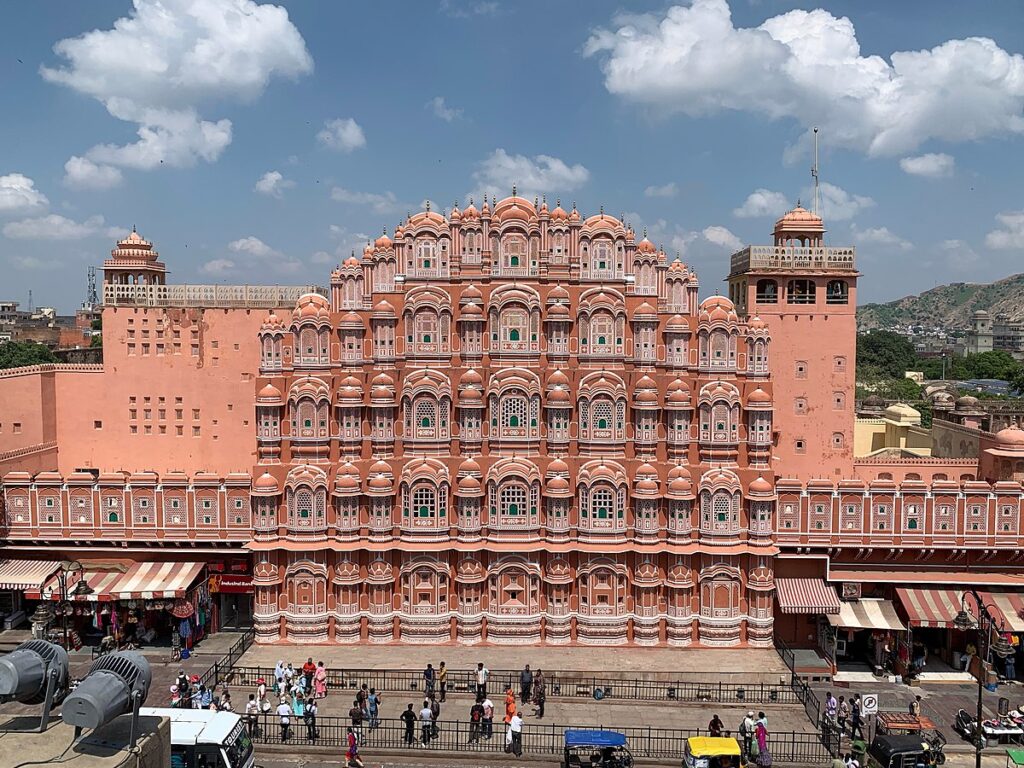
Amber Fort: A majestic fort with stunning views of the surrounding hills.
Amber Fort, located atop a hill in Jaipur, Rajasthan, is a spectacular citadel that evokes the grandeur of the Rajput era. Raja Man Singh built it in the 16th century, and its beautiful blend of Hindu and Mughal architectural styles is truly breathtaking. The elaborate mirror work, ornate sculptures, and breathtaking vistas of Maota Lake captivate visitors. The fort’s attractiveness stems not just from its historical significance, but also from its ageless beauty, transporting tourists to a bygone era of regal majesty.
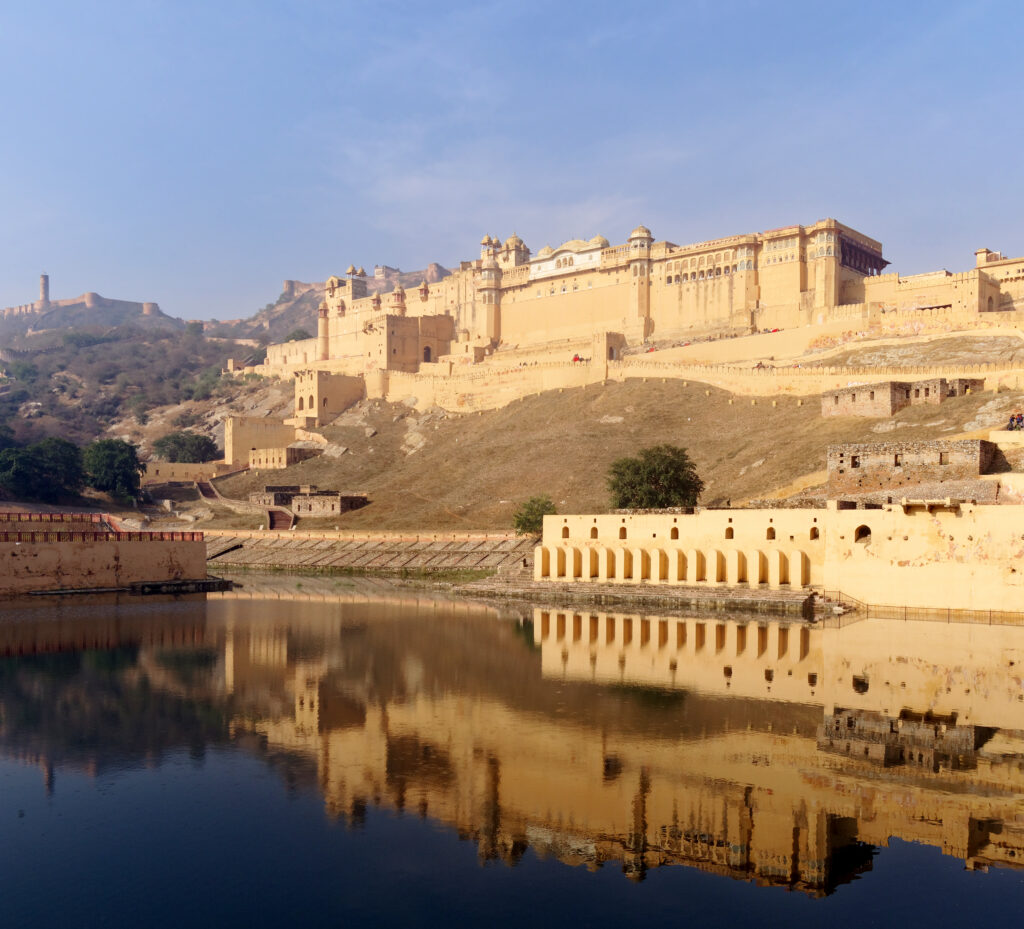
6. Bengaluru – The Garden City
Bengaluru, the Silicon Valley of India, is a perfect blend of technology and nature.
Lalbagh Botanical Garden: A serene oasis in the heart of the city.
Lalbagh Botanical Garden, located in the heart of Bengaluru, is a tranquil retreat for nature lovers. The park, founded in the 18th century by Hyder Ali and later developed by his son Tipu Sultan, boasts an outstanding array of plants. With its distinctive glasshouse, numerous plant species, and brilliant flower presentations, Lalbagh allows tourists to relax in nature, making it a beloved getaway in Bangalore’s bustling skyline.
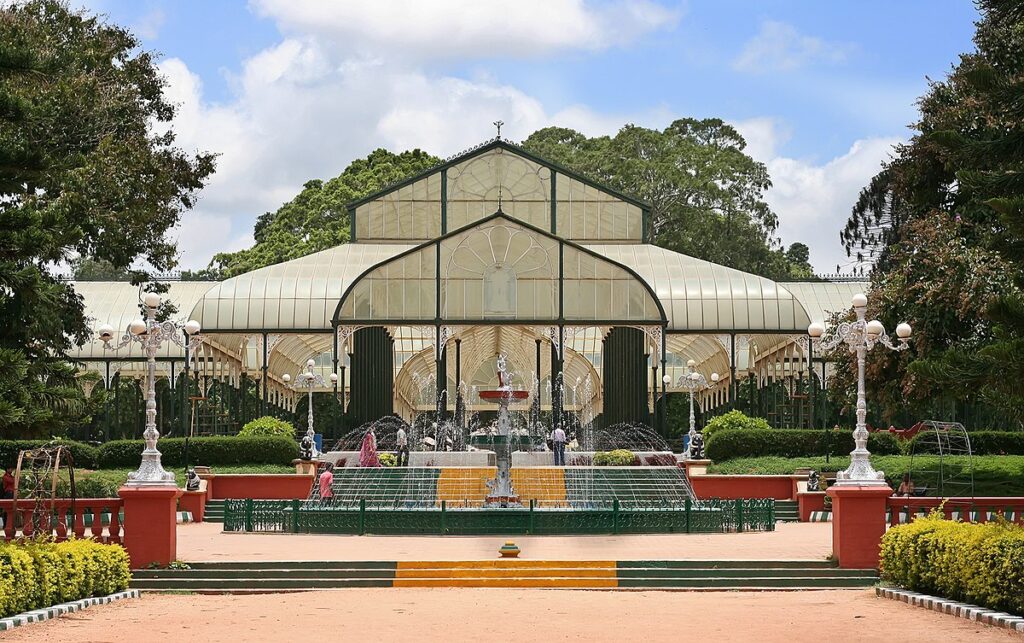
Vidhana Soudha: An imposing government building with remarkable architecture.
Vidhana Soudha, located in Bengaluru, Karnataka, is a massive complex that houses the state assembly and government offices. Kengal Hanumanthaiah designed this towering structure, which combines Dravidian and Indo-Saracenic architectural influences. Completed in 1956, it serves as a symbol of Karnataka’s political identity. The grandeur of Vidhana Soudha, when illuminated at night, enhances the city skyline and demonstrates the state’s dedication to government and democracy.
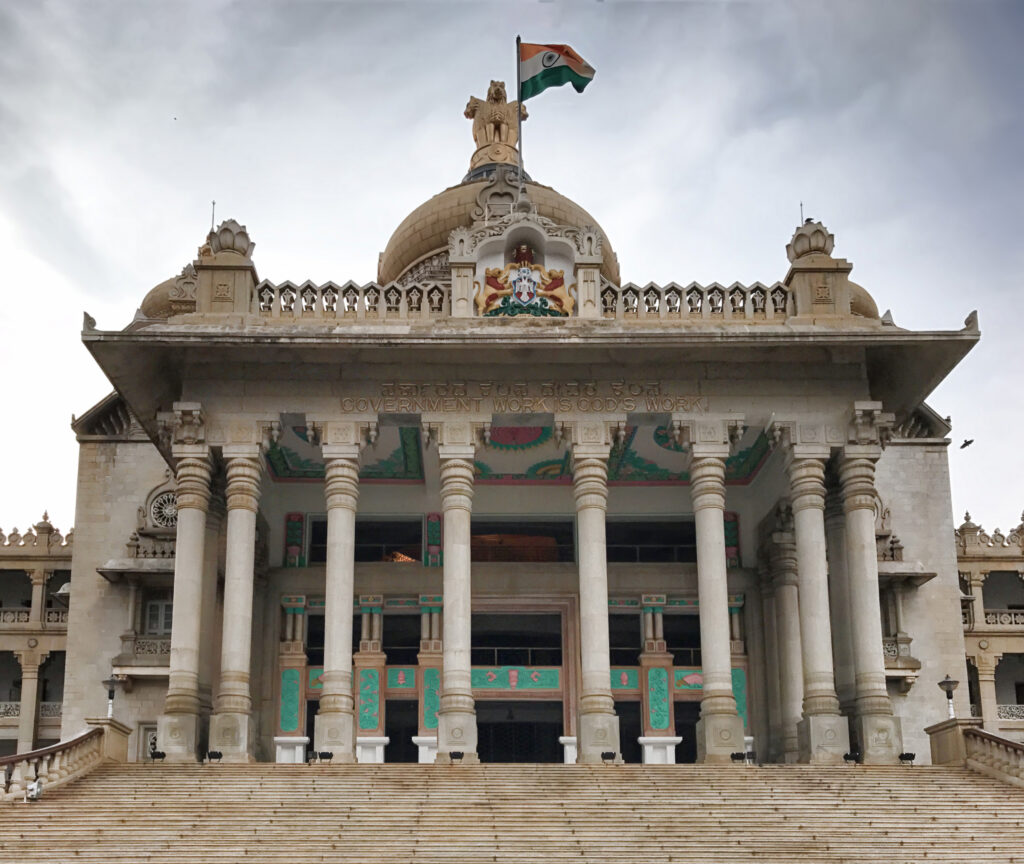
7. Kolkata – The Cultural Capital
Immerse yourself in the rich culture of Kolkata with these attractions:
Victoria Memorial: A marble tribute to Queen Victoria.
The Victoria Memorial, situated in the center of Kolkata, is an architectural marvel dedicated to Queen Victoria. Built during the British Raj, this white marble edifice combines Indo-Saracenic and European elements. Surrounded by lovely grounds, it serves as a museum, displaying a diverse collection of colonial antiquities. The Victoria Memorial is a stately reminder of Kolkata’s cultural history, inviting tourists to explore the city’s imperial past.
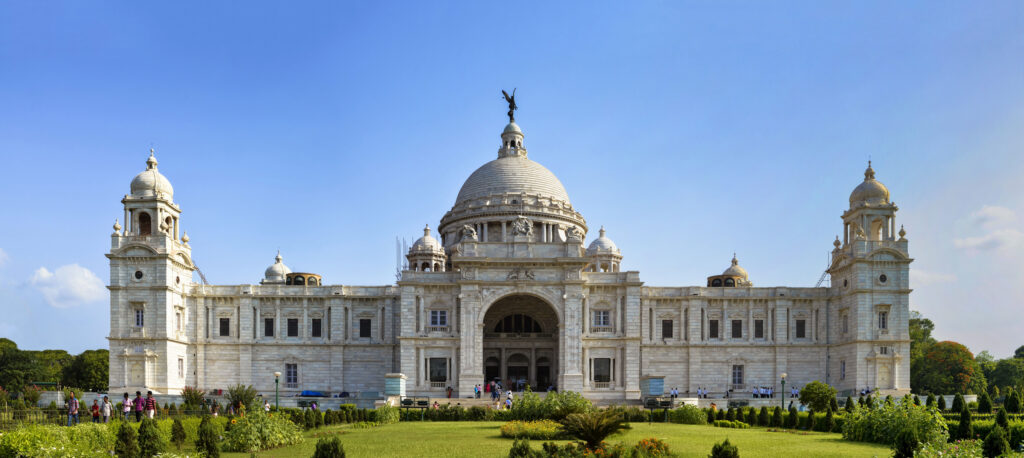
Howrah Bridge: An iconic cantilever bridge on the Hooghly River.
The Howrah Bridge, which spans the Hooghly River, is Kolkata’s architectural masterpiece and a symbol of the city’s historical attractiveness. This cantilever bridge, which connects Kolkata with Howrah, was completed in 1943 and remains one of the busiest in the world. The bridge’s distinctive architecture and magnificent night illuminations make it more than simply a critical traffic link; it is also an important component of Kolkata’s character and landscape. The Howrah Bridge remains an iconic monument, symbolizing the city’s perseverance and spirit.
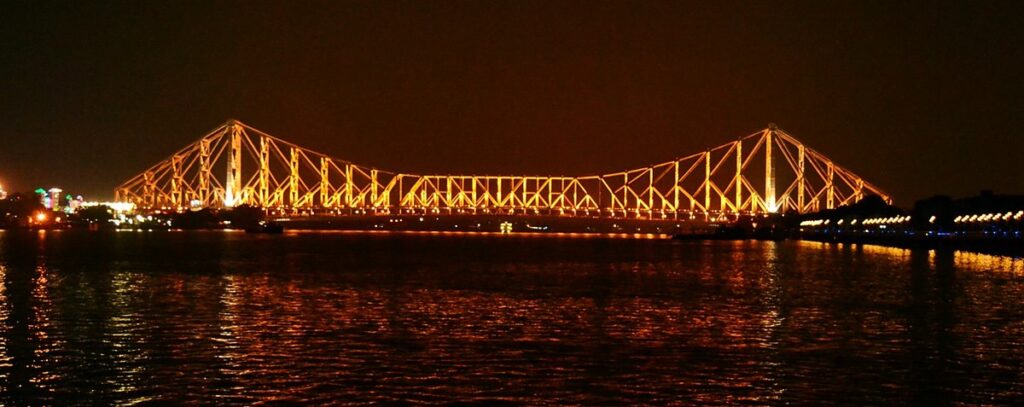
8. Udaipur – The City of Lakes
Known for its picturesque lakes and palaces, Udaipur is a romantic destination.
City Palace: A grand palace with stunning views of Lake Pichola.
Udaipur’s City Palace, which overlooks the peaceful waters of Lake Pichola, exemplifies the city’s regal legacy. Maharana Udai Singh II built this architectural wonder in the 16th century, combining Rajput and Mughal traditions. With elaborate courtyards, brilliant frescoes, and breathtaking views, the palace tells the story of Udaipur’s glorious history. The City royal, one of Rajasthan’s largest royal complexes, is an enticing location for visitors seeking to immerse themselves in the richness and history of the Mewar dynasty.

Jag Mandir: An island palace with beautiful architecture.
Jag Mandir, an island castle on Lake Pichola in Udaipur, Rajasthan, is a tranquil oasis surrounded by natural beauty. The palace, built in the seventeenth century, features remarkable architecture and beautiful marble work. Jag Mandir’s scenic surroundings and historical significance as a shelter for Prince Khurram (later Shah Jahan) make it a must-see site. Visitors may now explore its gardens and pavilions and enjoy the peacefulness that marks this island haven in the midst of Udaipur.
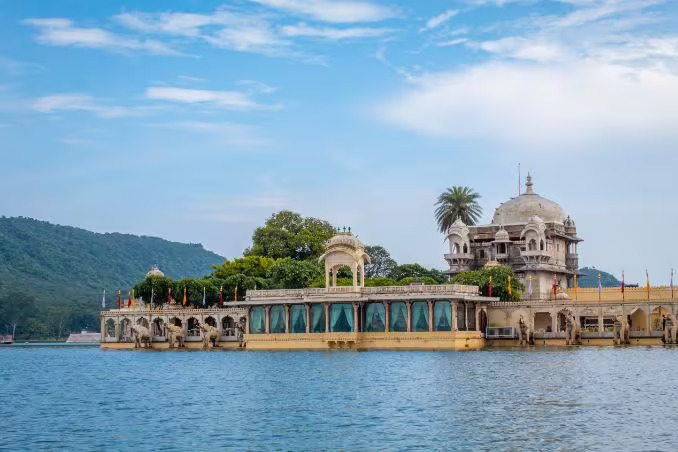
9. Shimla – Queen of the Hills
Shimla, nestled in the Himalayas, is a charming hill station.
The Ridge: A bustling open space with scenic views.
The Ridge in Shimla is a lively open place with breathtaking views of the surrounding Himalayas. This central hub, flanked with businesses and colonial-era buildings, acts as a cultural and social center for both residents and visitors. With Christ Church and Mall Road nearby, The Ridge is not just a gorgeous area, but also a bustling gathering place for events and festivals, contributing to Shimla’s allure.

Jakhoo Temple: A hilltop temple with a large Hanuman statue.
The Jakhoo Temple, located atop Jakhoo Hill in Shimla, Himachal Pradesh, is a sacred retreat. This ancient temple, dedicated to Lord Hanuman, is noted for the deity’s high statue. The temple, which is Shimla’s highest point, is reached via a picturesque climb that provides panoramic views of the town and surrounding mountains. Beyond its religious significance, Jakhoo Temple attracts both pilgrims and tourists seeking spiritual refuge in the tranquil Himalayan landscape.
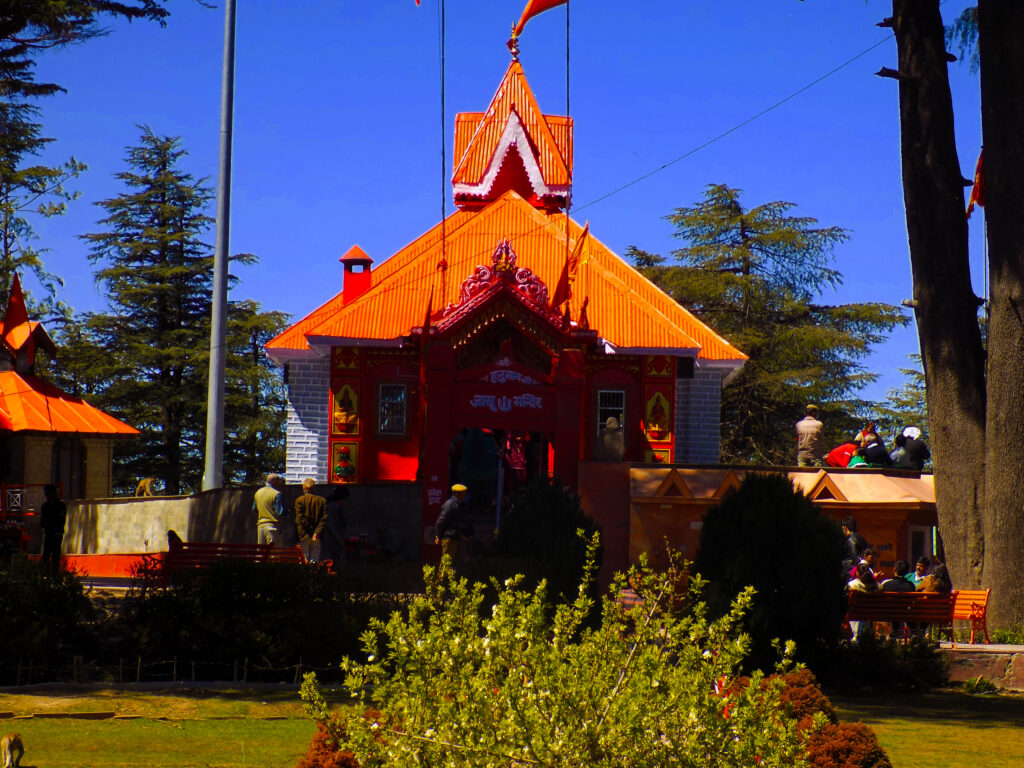
10. Chennai – Gateway to the South
Explore the vibrant culture and traditions of Chennai:
Marina Beach: India’s longest urban beach.
Marina Beach, which runs along the Bay of Bengal in Chennai, is India’s longest urban beach and a popular local destination. The beach, known for its golden sands, rhythmic waves, and dynamic ambiance, is a popular destination for recreational and cultural events. Marina Beach’s distinctive lighthouse, monuments, and memorials contribute to its beauty, making it ideal for a leisurely stroll, water sports, or simply watching the spectacular sunset over the Bay of Bengal.

Kapaleeshwarar Temple: A Dravidian-style temple dedicated to Lord Shiva.
The Kapaleeshwarar Temple, situated in the heart of Chennai, is a famed Dravidian-style temple dedicated to Lord Shiva. The tall gopuram and bright architecture highlight Tamil Nadu’s rich cultural heritage. The temple’s hallowed pond, elaborately carved pillars, and colorful deity statues create a mystical atmosphere. Kapaleeshwarar Temple, with its yearly Arubathimoovar celebration that draws both devotees and tourists, is a symbol of religious passion and architectural splendor in Chennai.

India’s diversity is reflected in these top 10 destinations, each offering a unique experience. Whether you’re a history buff, nature lover, or adventure seeker, India has something to captivate every traveler’s heart. Plan your itinerary wisely, and let the enchantment of India unfold before you.
Also Read: Island Oasis: Israel’s Desalination Program in Lakshadweep Amid India-Maldives Controversy

















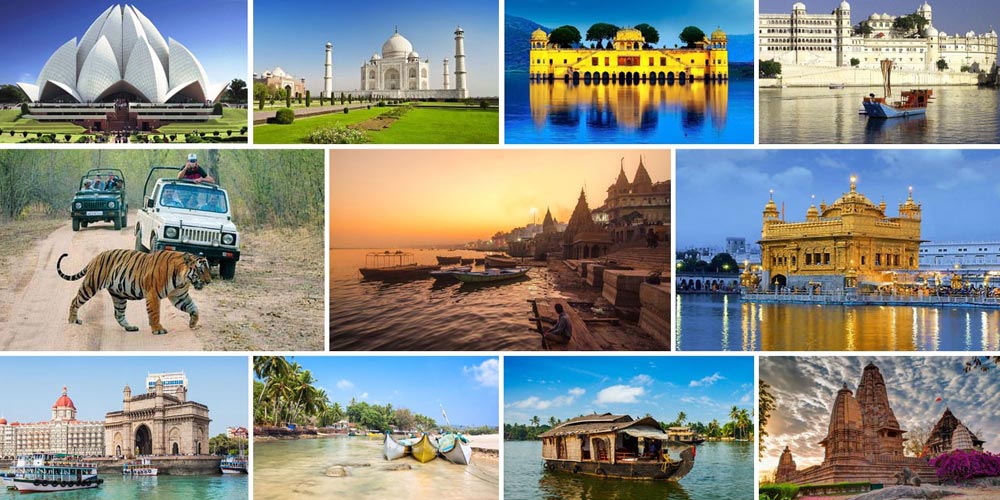

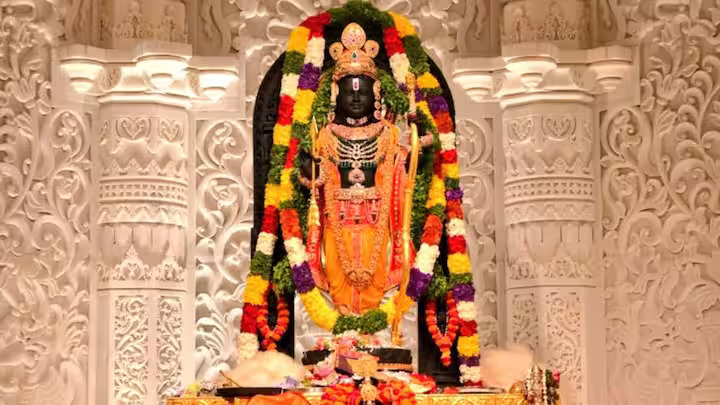

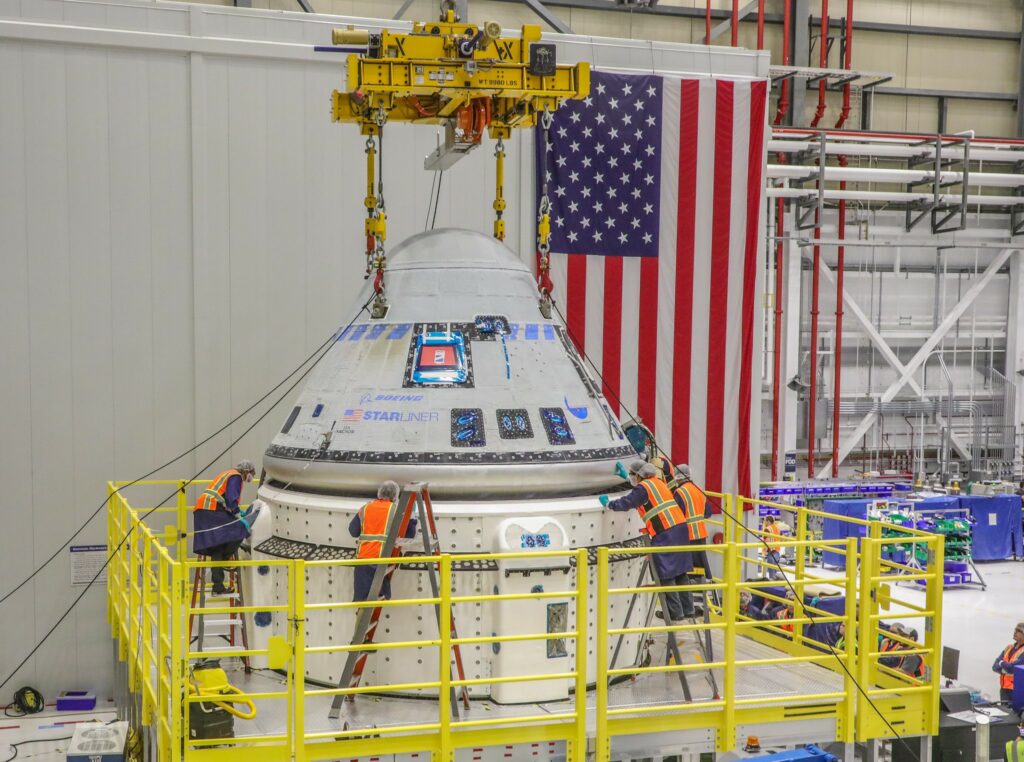
2 thoughts on “Top 10 places to visit in India”